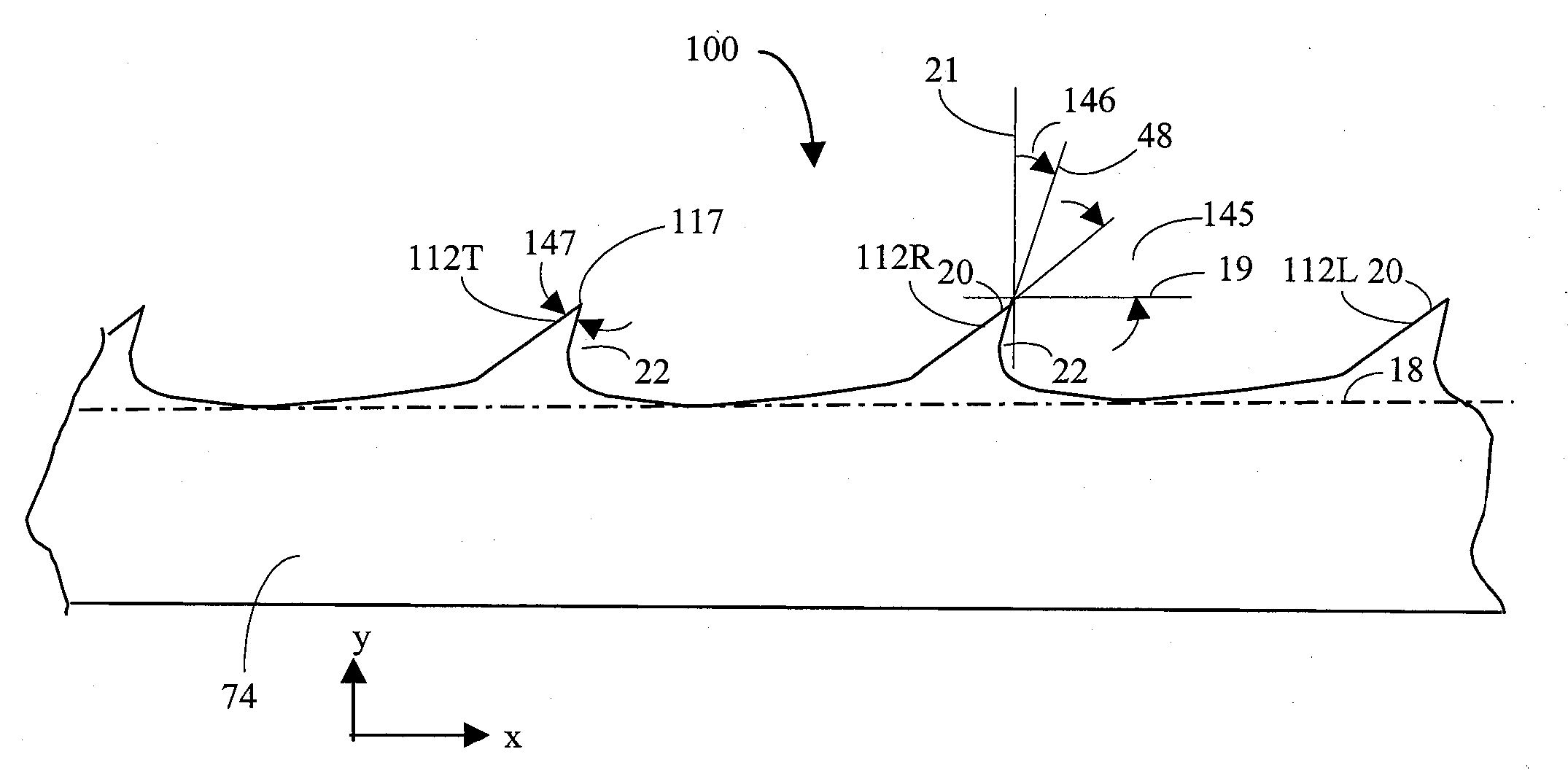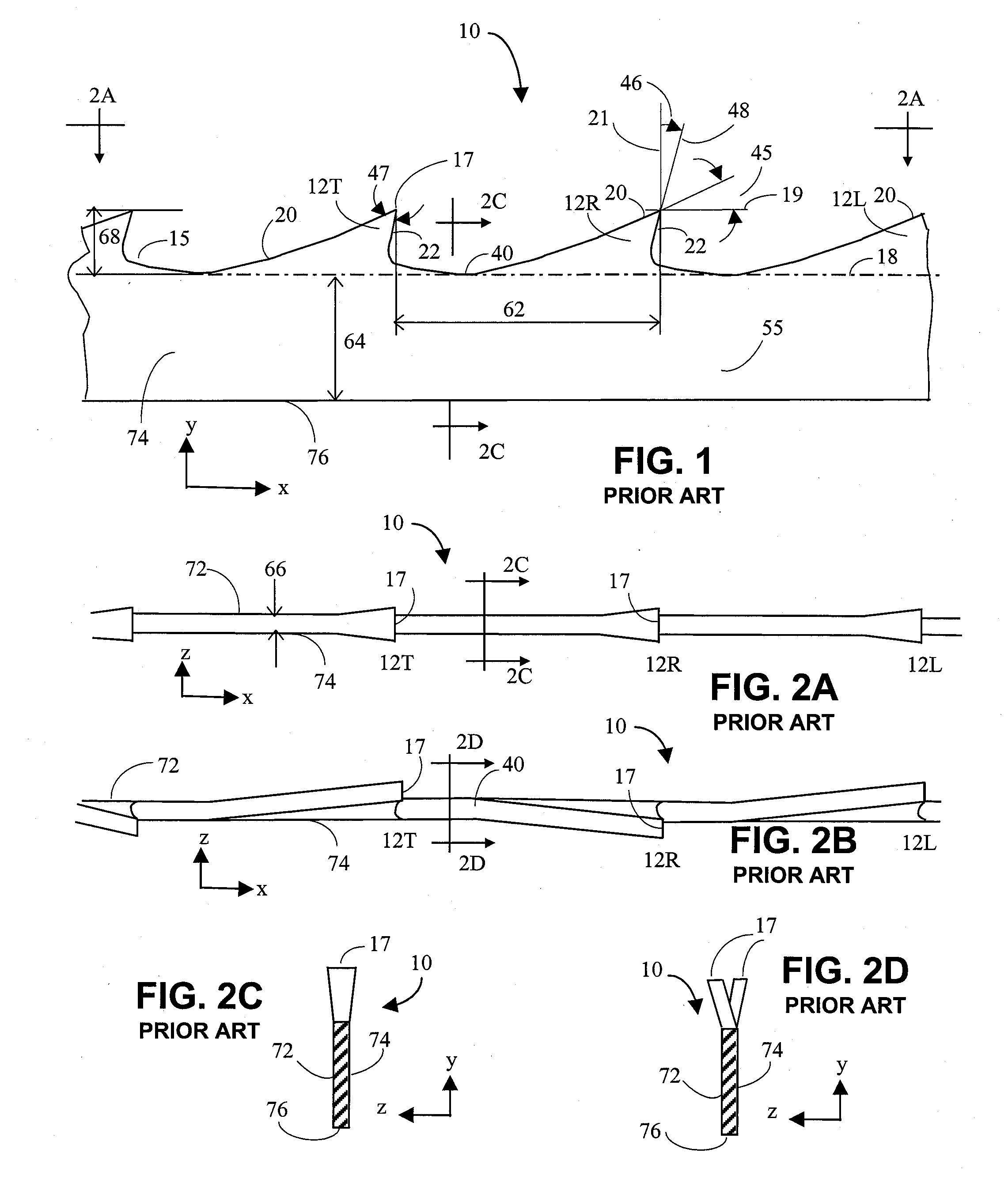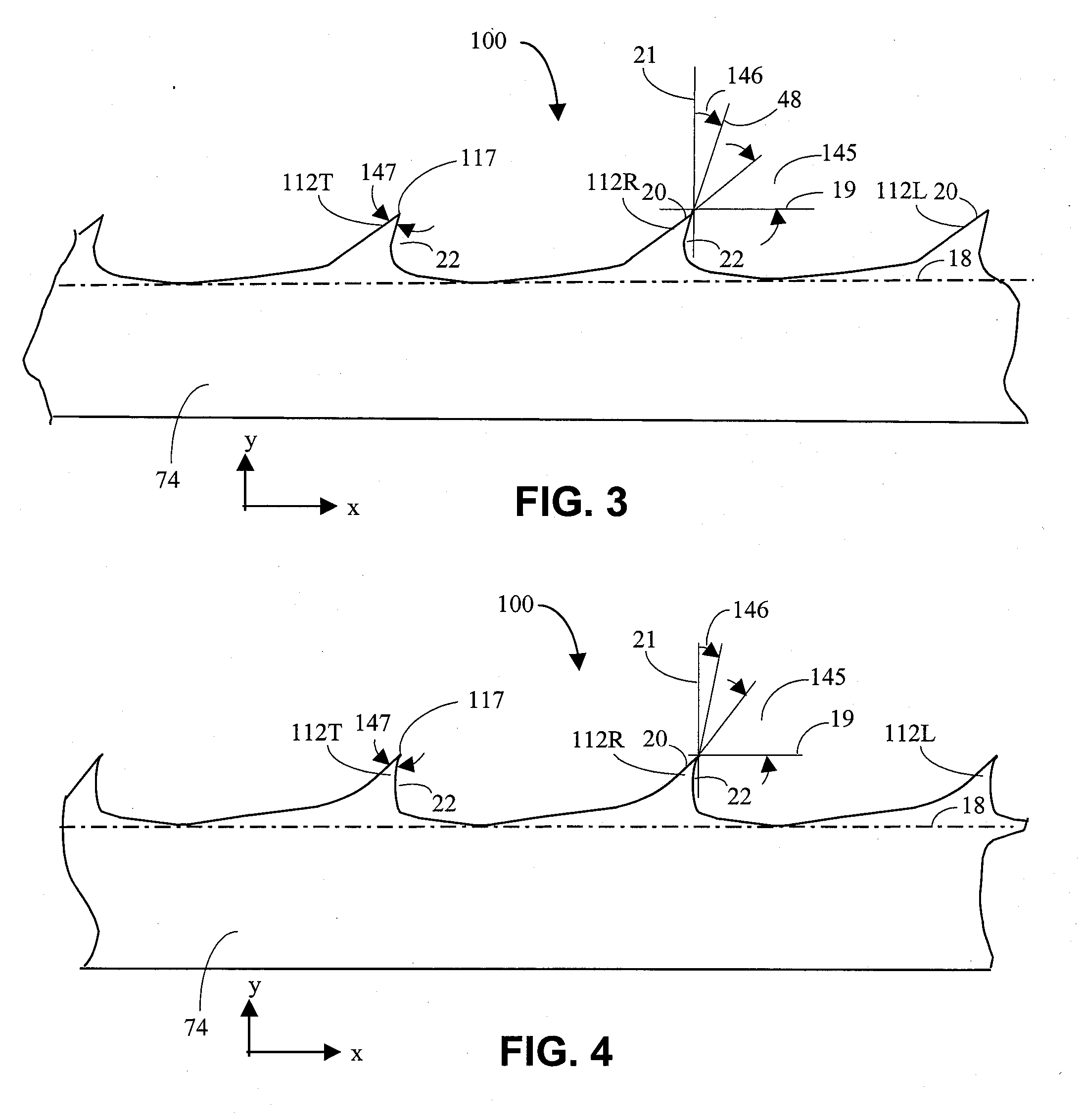Band saw blade
a band saw blade and blade technology, applied in band saws, saw chains, manufacturing tools, etc., can solve the problems of blade breakage, blade replacement, loss of efficiency
- Summary
- Abstract
- Description
- Claims
- Application Information
AI Technical Summary
Benefits of technology
Problems solved by technology
Method used
Image
Examples
Embodiment Construction
[0026] The present disclosure generally pertains to band saw blades. Exemplary embodiments of the disclosure described herein pertain to band saw blades used in sawmills for cutting a work piece, such as a log, into lumber. In order to provide a better understanding of band saw blade structures, a general description of conventional blade geometry is provided below.
[0027] Referring to FIG. 1 there is shown a conventional blade 10 having teeth 12 for cutting and removing material from a work piece (not shown), such as, for example a log or other piece of wood. In order to cut the work piece, blade 10 moves in the x direction at a desired blade velocity. In some wood cutting processes, the work piece moves in the negative y direction at a desired feed velocity and engages blade 10. In other wood cutting processes, the work piece remains stationary and blade 10 moves at a desired feed velocity in the y direction. The blade velocity and the feed velocity are generally selectable parame...
PUM
| Property | Measurement | Unit |
|---|---|---|
| back angle | aaaaa | aaaaa |
| hook angle | aaaaa | aaaaa |
| back angle | aaaaa | aaaaa |
Abstract
Description
Claims
Application Information
 Login to View More
Login to View More - R&D
- Intellectual Property
- Life Sciences
- Materials
- Tech Scout
- Unparalleled Data Quality
- Higher Quality Content
- 60% Fewer Hallucinations
Browse by: Latest US Patents, China's latest patents, Technical Efficacy Thesaurus, Application Domain, Technology Topic, Popular Technical Reports.
© 2025 PatSnap. All rights reserved.Legal|Privacy policy|Modern Slavery Act Transparency Statement|Sitemap|About US| Contact US: help@patsnap.com



